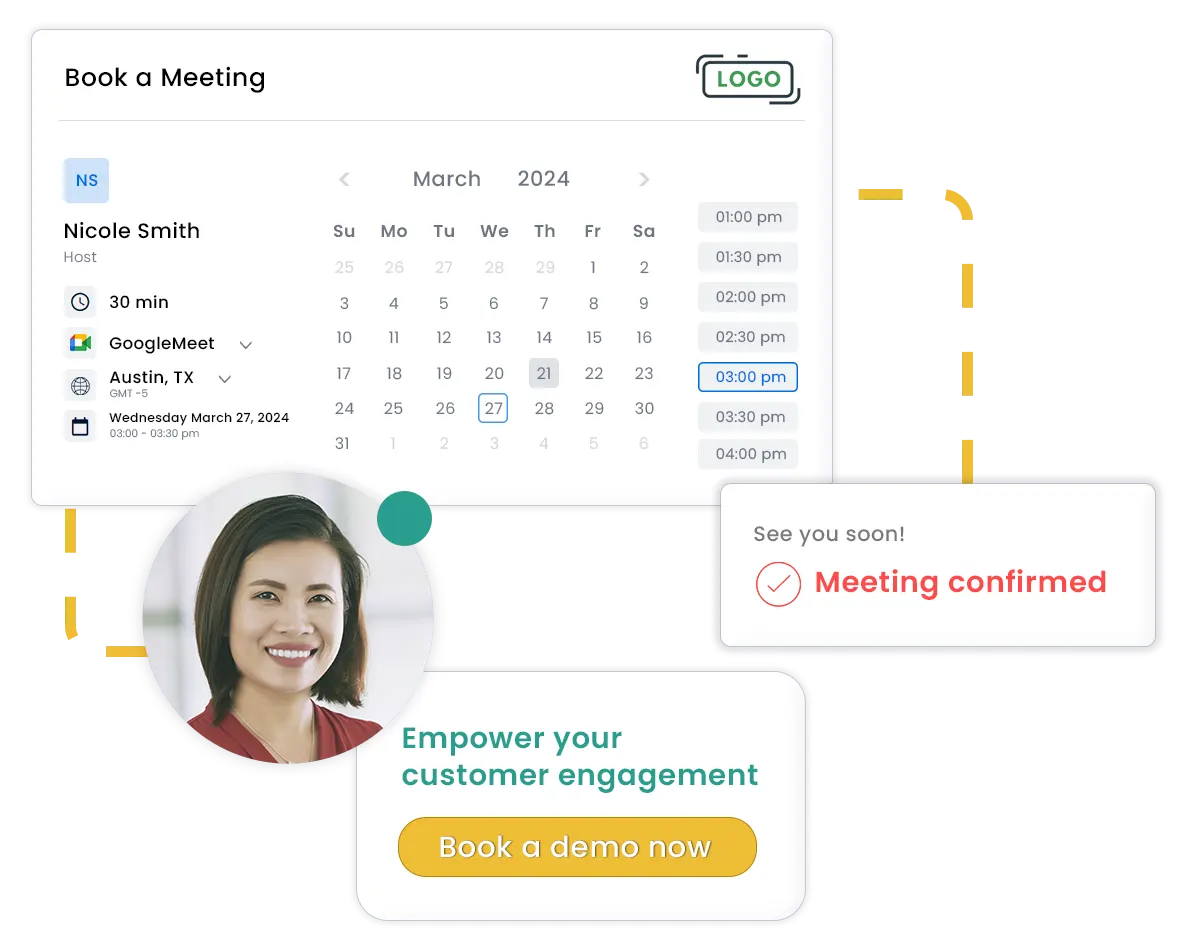Healthcare technology is constantly evolving and allowing practices to easily manage processes and information across their many systems. Clinics can now more effectively serve and connect with their patients digitally with these new technologies. Not only can the right technologies, like a customer engagement platform, support a practice’s need for efficiency, they can also deliver a better patient experience.
Be Available Even When You’re Not
Scheduling a clinic appointment is not one of the most enjoyable or convenient experiences for most people. The only time a patient can schedule an appointment is usually during a clinic’s open hours which also tends to be during people’s working hours. Booking appointments for patients is not always a positive experience for clinic staff either. A clinic’s reception desk has to juggle checking in patients with answering the phone, searching calendars for openings, and returning emails and calls.
Online scheduling makes it easier for patients to schedule appointments from a computer, mobile phone or tablet at any time convenient for them. Your appointment desk will receive fewer phone calls, spend less time booking appointments and have more time on more important tasks.
Make Sure They Show Up
Reminders are always a part of the patient appointment cycle for a practice’s admin staff. Postcards and phone calls are standard practice for many clinics but this is a highly manual task. Appointment scheduling software can eliminate this process. A clinic can schedule and send automated reminders to patients after they book an appointment.
Patients can choose if they want a phone, email or text to remind them of their appointment. Having all these options for patient reminders also benefits your staff. Based on a client survey, SUMO Scheduler found that automated reminders can reduce no-show appointments by as much as 35%.
In case you’re still not convinced, consider these projections for 2019 from a report by Accenture:
- 66% of U.S. health systems will provide online scheduling.
- 64% of patients will make appointments online
- 986 million appointments will be scheduled independently
- Value of online scheduling: $3.2 billion
Be Consumer-Centric
Patients have a choice in where they receive their care. The modern patient is conditioned by industries like Retail and Banking to expect an experience that is seamless.
Besides the convenience of self-scheduling an appointment 24/7 and automated appointment reminders, there are other ways a customer engagement platform can support a positive patient experience.
A customer engagement platform can support clinic providers being matched with patients based on a provider’s skill set as well as the provider of their preference. The location, a clinician’s gender, and the languages are spoken are also other criteria that can be searched by a patient to match them with the provider that suits their needs. Connecting providers with patients based on the patient’s preferences also benefit providers. Clinics can set parameters so providers are available to the patients they are qualified to treat.
Digitize Data and Check-In
Patient intake and registration is another pain point for clinics and patients. If the process is paper-based, collecting and updating patient information and documenting a patient’s needs for their appointment can be time-consuming.
A patient intake kiosk, such as a tablet installed in a clinic waiting room can alleviate the strain on front desk staff and providers. Patients are able to check-in then enter their details while they are waiting to be called for their appointment. This data can populate the patient’s EHR (electronic health record), allowing front desk staff to focus on other tasks while clinicians can access the information during the patient appointment.
Customer Experience as a Service
A good engagement platform will help streamline the entire patient visit process. It will also work within a clinic’s current system without any major disruption to your staff’s workflow. It should, in fact, help your staff be more efficient and give them more time to devote to patients that need more of their attention.




